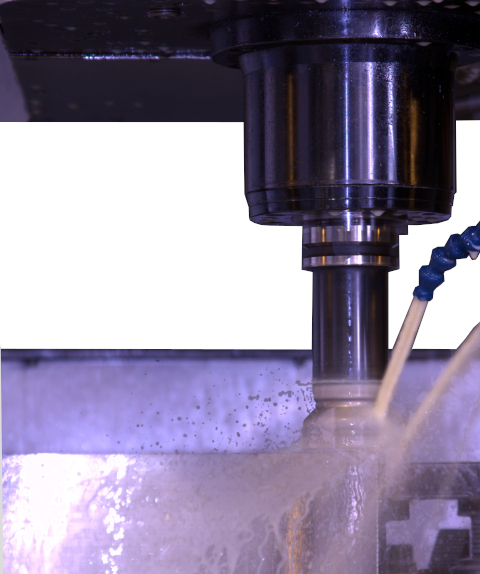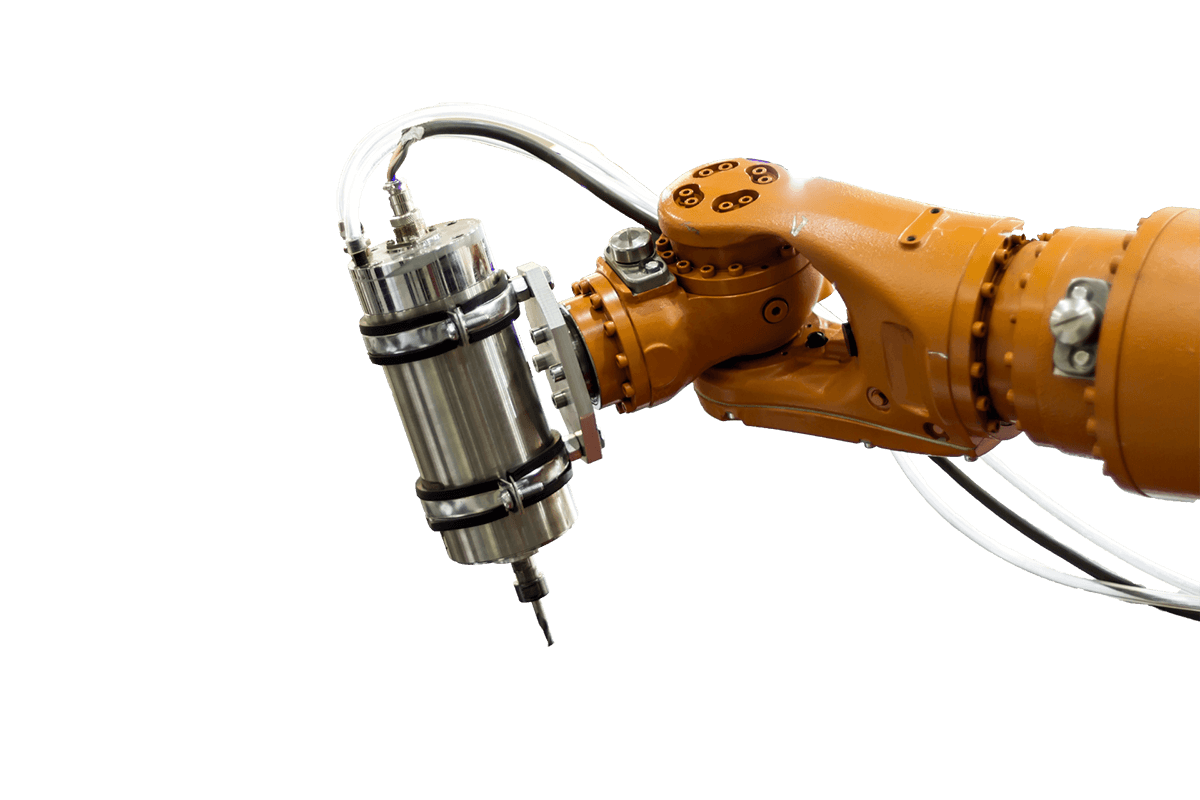PARTS MACHINING
Using an industrial robot as a machining center, we can:
\ carry out CNC machining,
\ apply adhesive or sealing masses,
\ perform laser or plasma cutting,
\ perform mechanical cutting,
\ carry out assembly processes,
\ accomplish automatic measurements and inspections,
\ solder,
\ polish,
\ deburr,
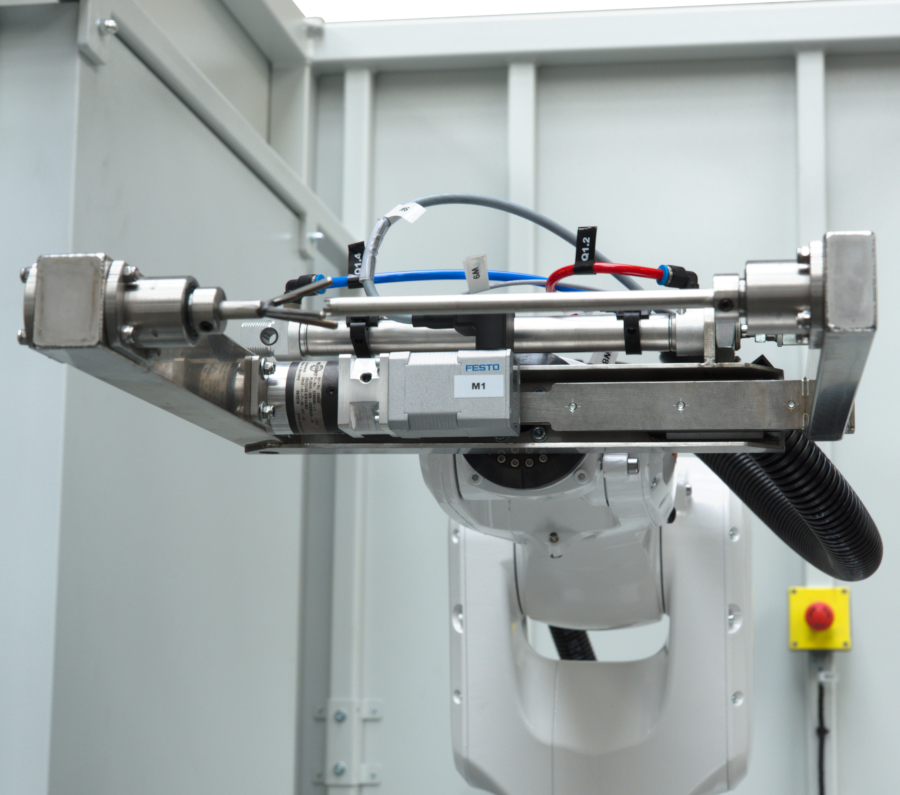
head solutions:
Available types of machining heads:
\ electric, pneumatic and hydraulic spindles,
\ pressure heads (washing or cutting),
\ soldering heads,
\ torches,
\ optical and vision heads,
\ measuring,
\ welding gun,
\ riveters,
\ deburring heads,
Additional options available:
\ tool wear compensation,
\ clamping strength compensation,
\ ambient temperature compensation,
\ automatic calibration
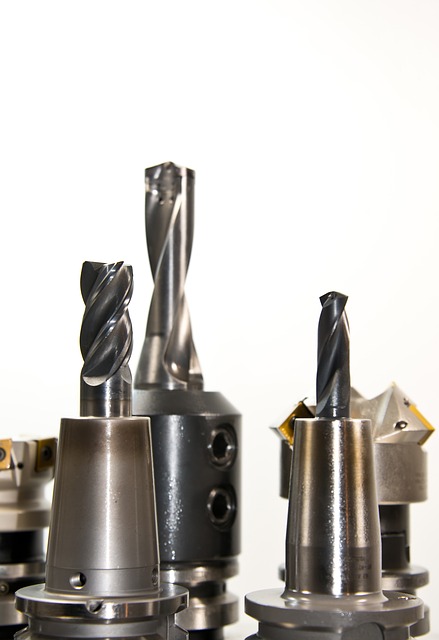
system tools:
The software allows for the combination of CNC and robot functions. The main advantage of this solution is support as for a traditional CNC control system, while allowing for:
\ programming the robot like CNC machine,
\ tool radius correction in the control system,
\ increased efficiencies of robot track,
\ offline programming possibilities using CAD/CAM systems,
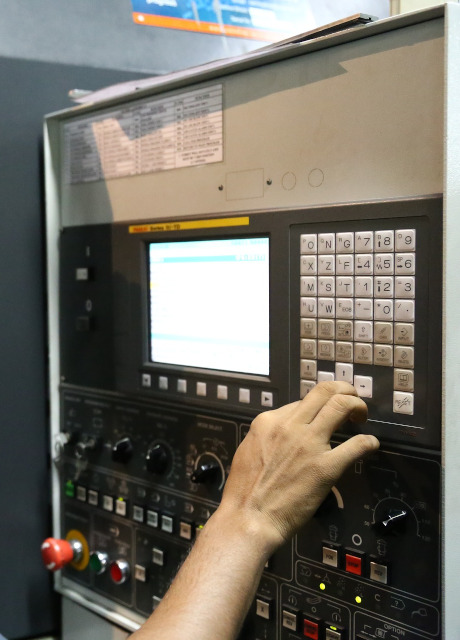
Process repeatability, machining quality, increased productivity are just a few basic advantages of such applications. Equally important for people managing production and responsible for ensuring the safety of employees is the elimination of risk factors during work especially dangerous for people, such as operate uncovered machines, high temperature and high dust level.
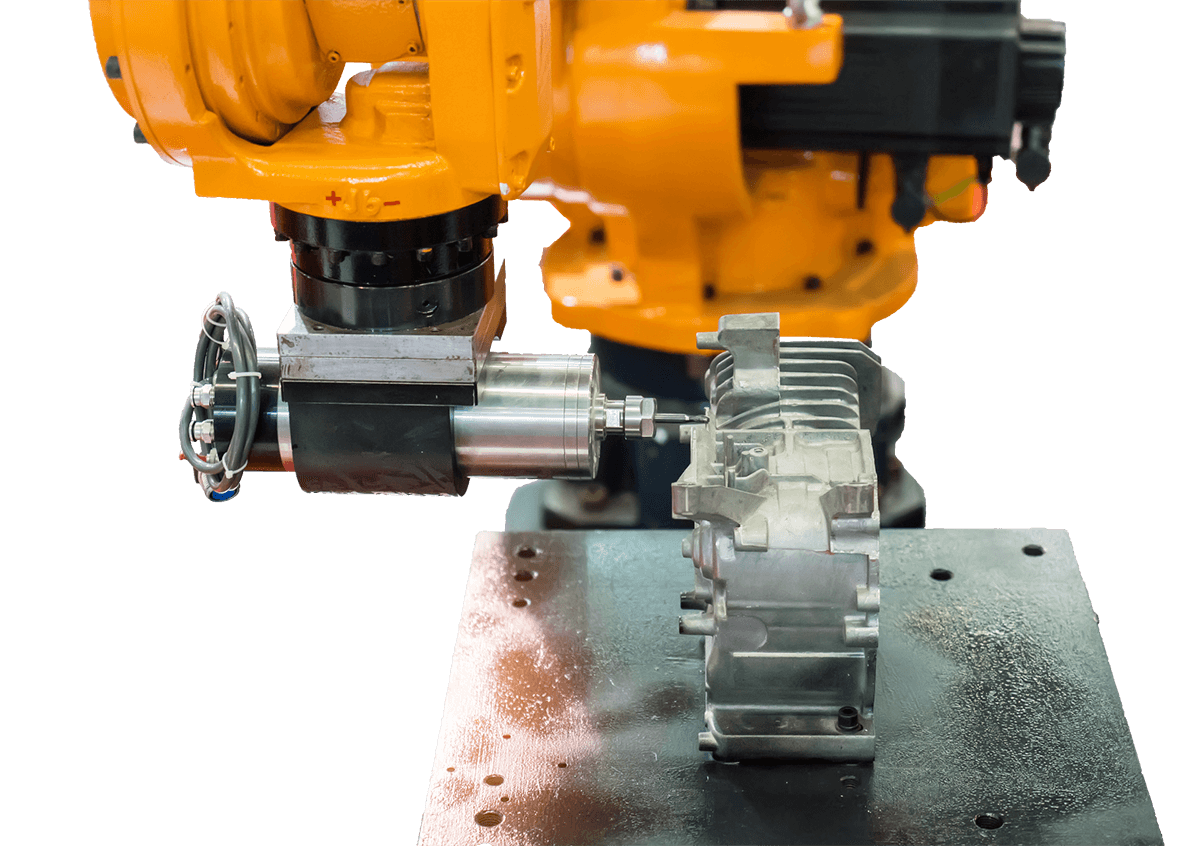
processing stations:
For robotization of the machining process it is required to use the cell with appropriate protective and supporting equipment.
For robotized applications it will be:
\ guard fence or permanent cover adapted to the conducted production processes,
\ safety elements on loading/unloading stations (often optical safety elements or supervised movable covers),
\ local desktop or control panel.
Additionally, depending on the process, there should be included additional elements, such as:
\ chip / vapor / oil mist extraction,
\ flow for refrigerant,
\ supplying the media necessary for the work of the head and devices,
\ tool magazine for multi-stage processes or with different stage of processing.
